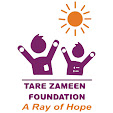As society is progressing and moving towards developing, class struggles are increasing in intensity as well. Nothing brings India's poverty more to light than the Global Hunger Index rankings of 2019 where India placed 102 among 117 countries, ranking lower than our territorial neighbours, Nepal, Bangladesh, and Pakistan.
Poverty in India
Several domestic surveys and scales indicate that no less than 25% of India's population is poverty-stricken. If one is to consider the international rankings, the number appears to be even higher. Moreover, the percentage of the low population is relatively larger in rural areas where class and caste boundaries continue to dominate social structures, as compared to urban cities.
Reality is evidence of the fact that the poor remain marginalised in our society. The schemes and policies that the government initiates for the upliftment of the impoverished do not get implemented correctly, and thus, fail to reach the poor.
Apart from the apparent disadvantageous position that the poor occupy, poverty does not allow for upward mobility. When one is poor, one has everything working against them. From the time they are born till the day they die unless one encounters some miracle, poverty does not allow one to escape from its clutches.
Necessities, which are taken for granted by the rich, become luxuries for the poor. Opportunities for education and employment are rare, with most children studying in government schools and altogether abandoning higher studies to support their families. Apart from this, the poor are mostly employed in the unorganised sector and have to suffer massive labour exploitation without any check.
Additionally, social evils go uncurbed in poverty. Child marriages, child labour, female infanticides, rape, murder are issues that do not find justice if the victim and the victim's family is poor.
The Powerful Rich
Yet, the rich remain more vigorous than ever. Socially, politically, and economically. Socially, they are well-respected and deferred due to their prevailing societal connections. In India's formative years, the interests of the landowning classes were considered in policymaking.
Things are not much different in today's India, where the business classes receive preferential treatment in the government's agendas. Economically, the rich are affluent enough to secure the best of facilities and the choicest of resources.
Keeping this in mind, it would not be wrong to say that initiatives like privatisation of establishments that were previously state-controlled would affect them the least. They would still have access to healthcare services, education, and necessities, whilst the poor suffer to make ends meet.
Yes, India is progressing. Yes, India is indeed becoming a more affluent economy. But at what cost? The gap between the rich and the poor is the largest it has ever been. Attempting to bridge this gap will be a gargantuan task, one that we are not sure any government or institution can manage.





0 Comments